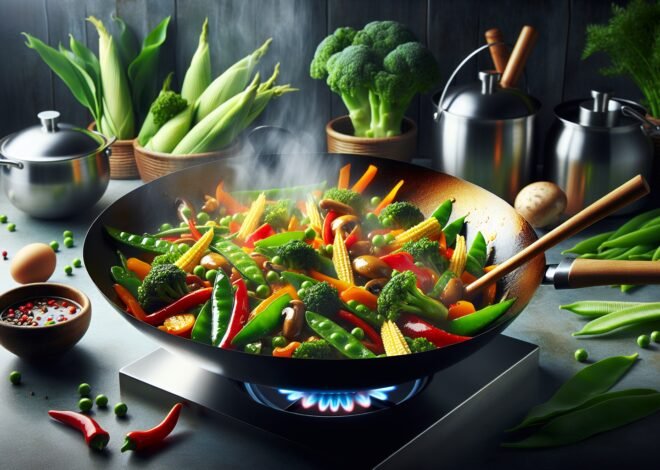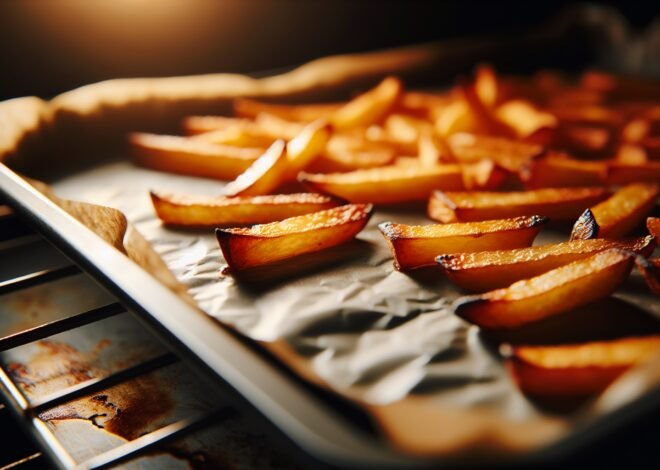
Best Tips for Baking at High Altitudes
Baking at high altitudes presents unique challenges that can turn a simple recipe into a complex task. At elevations above 3,000 feet, the atmospheric pressure is lower, which affects how ingredients interact. This can result in sunken cakes, dry cookies, and overly dense bread. This post will cover essential tips, such as adjusting temperatures and ingredient ratios, to help you achieve perfect results despite the altitude. Whether you’re a home baker or a professional, mastering high-altitude baking techniques is crucial for successful culinary endeavors.
Understanding High Altitude Baking Challenges
Baking at high altitudes can be a daunting task for many. The unique conditions found in elevated regions affect how ingredients interact and can lead to unexpected results. To master the art of high altitude baking, it’s essential to grasp these challenges fully.
How Altitude Affects Baking Ingredients
At higher altitudes, the air pressure is lower, which impacts how ingredients behave. This atmospheric change can lead to quicker evaporation of liquids, meaning batters and doughs dry out faster. Additionally, leavening agents like yeast, baking powder, and baking soda act more aggressively, causing baked goods to rise too quickly and risk collapsing.
Flour absorbs moisture differently in high altitudes. As a result, baked goods may turn out denser if adjustments are not made. Sugar, too, plays a different role, as it can tenderize and moistens but also affects the structure when evaporation is rapid.
Understanding these factors is the first step to adapting your favorite recipes for high elevation, ensuring the chemistry aligns with the environmental conditions.
Common Problems Faced by Bakers at High Elevations
Bakers at high elevations often deal with a set of common issues. Cakes may fall in the center, cookies might spread too much, and breads could become overly dense. The rapid rise of batters and dough, due to lower air pressure, often results in a collapse as the structure cannot support itself.
Moreover, the quicker evaporation rate leads to dry, crumbly textures in baked goods. This phenomenon can also cause ingredients to concentrate, affecting the flavor balance. Recipes crafted for sea level often require a complete overhaul to perform as intended at high altitudes.
Addressing these problems requires both an understanding of the science and practical adjustments in baking techniques.
The Science Behind Baking Adjustments at High Altitudes
Science plays a crucial role in adjusting baking practices for high altitudes. The key lies in understanding how to manipulate pressure, temperature, and ingredient ratios to maintain the integrity and texture of baked goods.
At its core, successful adaptation involves reducing leavening agents to prevent rapid expansion and collapse. Increasing liquid ingredients compensates for faster evaporation. Similarly, adjusting oven temperatures can help manage the rate of baking, ensuring thorough cooking without over-browning.
By employing these scientific principles, bakers can create reliable recipes that perform well despite the challenges of high-altitude conditions.
Essential Tips and Tricks for Successful High Altitude Baking
Equipping yourself with the right tips and tricks can transform your high-altitude baking experience. Embrace these adjustments to conquer the challenges and ensure your baked goods turn out perfectly every time.
Adjusting Ingredient Proportions for High Altitude
Adjusting ingredient proportions is crucial for high-altitude baking success. Reducing sugar and increasing flour can help create the right balance. Sugar breaks down more quickly at higher altitudes, which can affect texture and stability. By slightly reducing sugar, you maintain structure without sacrificing flavor.
Flour adjustments ensure the right consistency and prevent baked goods from collapsing. Consider adding an extra tablespoon of flour per cup used in the recipe. Adding a bit more liquid, like milk or water, helps compensate for faster evaporation, ensuring your baked goods remain moist.
These small adjustments in ingredient proportions make a significant difference in achieving the perfect bake at high elevations.
Modifying Cooking Times and Temperatures for Best Results
Cooking times and temperatures play a pivotal role in high-altitude baking. Lower air pressure means reduced resistance against expansion, so baked goods rise rapidly. Increasing oven temperatures by 15 to 25 degrees Fahrenheit can help set the structure quickly and prevent collapse.
Conversely, reducing baking time by 5 to 8 minutes can ensure items don’t over-bake. Each recipe might require slight tweaking to find the perfect balance, but these guidelines are a solid starting point.
Careful observation during baking is key; use visual and tactile signs to determine doneness, rather than strictly relying on time. This approach helps accommodate the unique environment of high altitudes.
Tools and Equipment for High Altitude Baking
Investing in the right tools and equipment can significantly enhance your high-altitude baking experience. A high-quality oven thermometer ensures accurate temperature readings, essential for precise baking results.
Baking sheets with rims can help manage cookie spread by providing structure. Additionally, specialized baking pans designed for high-altitude conditions can aid in even baking and consistent results.
Mixing tools, like stand mixers, help achieve the proper consistency, while digital scales ensure precise measurements, crucial for making necessary ingredient adjustments.
Equip your kitchen with these essential tools to navigate the challenges of high-altitude baking confidently.
Troubleshooting Common High Altitude Baking Issues
Even with the best preparation, issues can still arise when baking at high altitudes. Knowing how to troubleshoot these common problems ensures that you can swiftly correct any mishaps and achieve the perfect bake.
Solutions for Flat and Dense Baked Goods
Flat and dense baked goods often result from insufficient leavening. At high altitudes, reduce the amount of baking powder or baking soda by about ¼ teaspoon per teaspoon used. This adjustment prevents over-rising and collapse.
Incorporate more air into your batter by whisking thoroughly, increasing the volume and lightness. Adjusting the flour content, by adding a tablespoon per cup, can improve structure and consistency.
Understanding these adjustments can help transform dense bakes into light and airy delights, regardless of elevation challenges.
How to Prevent Over-Sinking and Falling Cakes
Cakes sinking in the middle is a common issue at higher elevations. One effective solution is to decrease sugar slightly, as too much can weaken the cake’s structure. Additionally, monitor the amount of leavening agent used and reduce by about 20% to prevent over-expansion.
Bake cakes on the middle rack to ensure even heat distribution. Avoid opening the oven door frequently, as this can cause temperature fluctuations and impact the baking process.
These strategies help cakes maintain their shape and avoid the dreaded sinkhole effect.
Fixing Cookie Spread and Dough Consistency in High Altitude
Excessive cookie spread is a frequent issue. To tackle this, slightly increase the flour content to give cookies more structure. Chilling the dough for a few hours before baking can also help reduce spread by solidifying the fat, leading to thicker, chewier cookies.
If your dough is too dry, incorporate a tablespoon of liquid to achieve the desired consistency. Keep an eye on the baking time, reducing slightly if needed, to prevent over-browning.
With these troubleshooting tips, you can bake cookies that hold their shape and deliver delightful texture, even at high altitudes.
Conclusion
Baking at high altitudes requires adjustments due to differences in atmospheric pressure. Leavening agents need to be reduced to prevent baked goods from rising too quickly and collapsing. Liquids may evaporate faster, necessitating an increase in moisture. Oven temperatures might need to be raised to ensure proper baking. Additionally, stronger or more flour can help provide structure to avoid flatness in the final product.
FAQ
How do high altitudes affect baking consistency and texture?
At high altitudes, lower air pressure can lead to drier air, causing baked goods to lose moisture quickly. This often results in a drier, crumbly texture and inconsistent baking results.
What adjustments are necessary for baking cookies at high altitudes?
To bake cookies successfully at high altitudes, reduce sugar slightly and add a bit more liquid to maintain moisture. Increasing oven temperature by 15 to 25 degrees Fahrenheit can also help set the structure faster.
Why does bread rise differently at high altitudes?
Bread typically rises faster at high altitudes due to lower air pressure, which can over-expand the dough, leading to a coarse texture. Adjusting the yeast and allowing for shorter rising times can improve results.
What tips can help prevent cakes from collapsing at high altitudes?
To prevent cakes from collapsing, decrease leavening agents like baking powder or baking soda. Increasing oven temperature also helps cakes set before they over-expand.
How does baking time change for high altitude recipes?
Baking time often shortens at high altitudes because the faster evaporation speeds up cooking. Monitoring baked goods closely and performing doneness tests earlier can help avoid overcooking.
What common ingredients need modification for high altitude baking?
Ingredients such as flour, sugar, and liquids often require adjustments. Use slightly less sugar and flour, while increasing liquids to maintain the right consistency and moisture content in your recipes.











